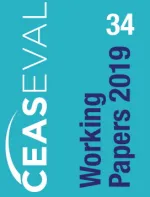Secondary Movements

CEASEVAL Working Paper No. 34
Even though secondary movements of applicants for and beneficiaries of international protection are not foreseen in the Common European Asylum System (CEAS), in reality a considerable number of people move across the EU either during their asylum application process, or after receiving the status, taking advantage of the intra-Schengen borderless regime. Although the scale of these secondary movements is unknown, the phenomenon has been on the radar of policy makers since the introduction of the Schengen regime and its prevention became one of the major aims of the CEAS. Twenty years since the Tampere Council Conclusions initiated the establishment of the CEAS, no tangible results have been achieved in responding to secondary movements. The paper at hand maps different CEAS policies addressing secondary movements, discusses contested measures and sketches out the latest proposals of the third generation CEAS with respect to secondary movements. With the aim to learn about its causes in order to properly address them, the paper further summarises the research on the motives why people engage in secondary movements. The latter is based on available literature and on research conducted in the framework of the CEASEVAL project (interviews with migrants, applicants for and beneficiaries of international protection). The paper concludes that a sustainable policy approach, which identifies the main reasons for secondary movements, is needed rather than just reacting to secondary movements with punitive measures Keywords: Secondary movements, CEAS, mobility, Schengen, Dublin system, responsibility